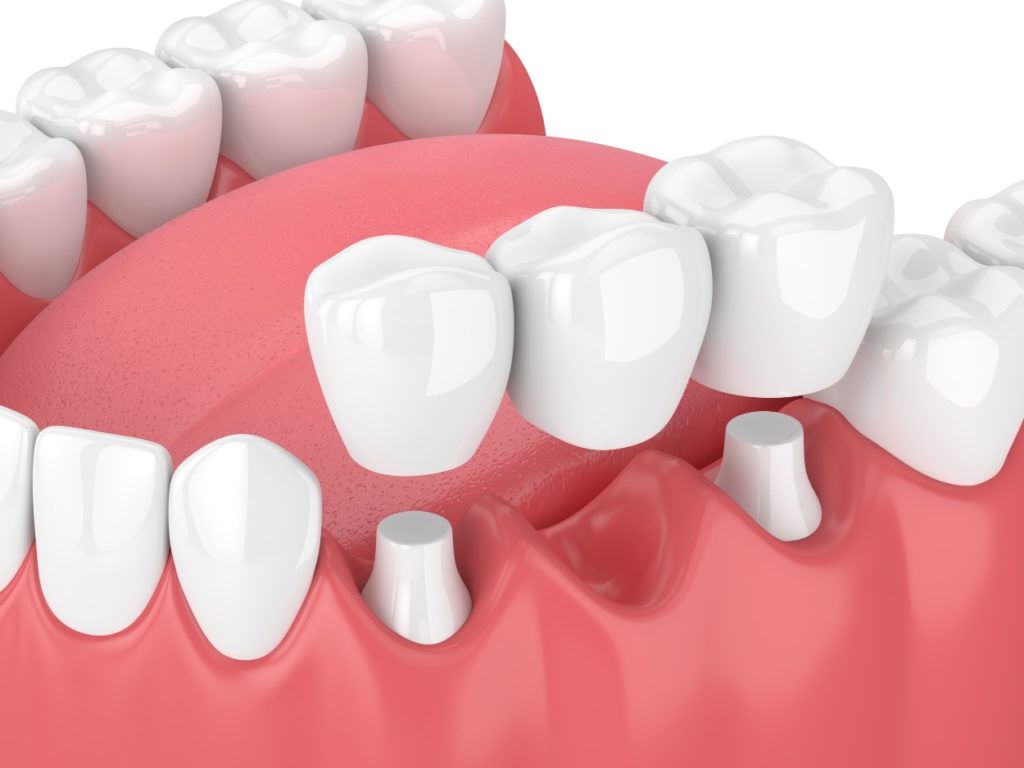
After tooth loss, you’re faced with a decision for how you want to restore your smile. One option a dentist in Medford may recommend is a dental bridge, which can be an excellent, cost-effective choice. But, as with any dental procedure, there are some considerations to think about such as how long it lasts and how it should be maintained. In this blog, you’ll learn whether the teeth that support a bridge can get cavities and other factors that can cause a bridge to fail. You’ll also get tips for maintaining a dental bridge to help it last as long as possible.
Can the Teeth That Anchor a Bridge Get Cavities?
Yes. A dental bridge uses two natural teeth on either side of a missing tooth for support. These teeth have dental crowns on them that are fused to a “floating” crown in the middle. But just like any other teeth that have been crowned, they’re still susceptible to both cavities, infections, and gum disease.
In some cases, a cavity on one of the anchor teeth can be found very early during a routine checkup and treated with a small filling. In others, the cavity isn’t found in time and requires taking the bridge off for treatment. Unfortunately, this means a new bridge would also be necessary.
How Long Does a Dental Bridge Last?
When properly cared for, a dental bridge can last 10 to 15 years or more, assuming that one of the following factors don’t lead to failure:
- Poor oral hygiene that leads to an infected tooth in Medford, a cavity, or gum disease that affects one of the anchor teeth.
- Clenching and grinding or chewing on ice or hard candies, all of which can break the bridge itself.
- Neglecting regular checkups, which are important for maintaining both natural teeth and all types of dental work.
How To Maintain Your Dental Bridge Over the Long-Term
These tips will help your dental bridge last many years:
- Maintain good oral hygiene habits – Make sure to keep the gumline around your bridge clean with good brushing and flossing habits and remove plaque buildup underneath your bridge with either floss threaders or an oral irrigator. Swishing with a fluoride mouthwash will give you extra cavity prevention.
- Wear a nightguard if necessary – A custom-made nightguard will protect your bridge from damage that can occur from chronic clenching and grinding.
- Be mindful when chewing – Be careful when you eat hard, crunchy foods like nuts and seeds and get in the habit of chewing on the opposite side. Don’t chew on ice or hard candies.
- Schedule regular checkups – These visits ensure that issues are found and treated as soon as possible, which can potentially save your bridge from needing to be replaced.
A dental bridge is a great investment that restores the appearance and function of your smile after tooth loss. With these simple guidelines, you’ll protect that investment as long as possible!
About the Author
Dr. Gary Rosenfeld is a general and emergency dentist in Medford with over 35 years of experience. He offers multiple replacement options for missing teeth, including dental bridges, and always gives his patients the information they need to maintain their dental work over the long-term. If you’d like to know more about dental bridges or have any questions, he can be reached via his website.

